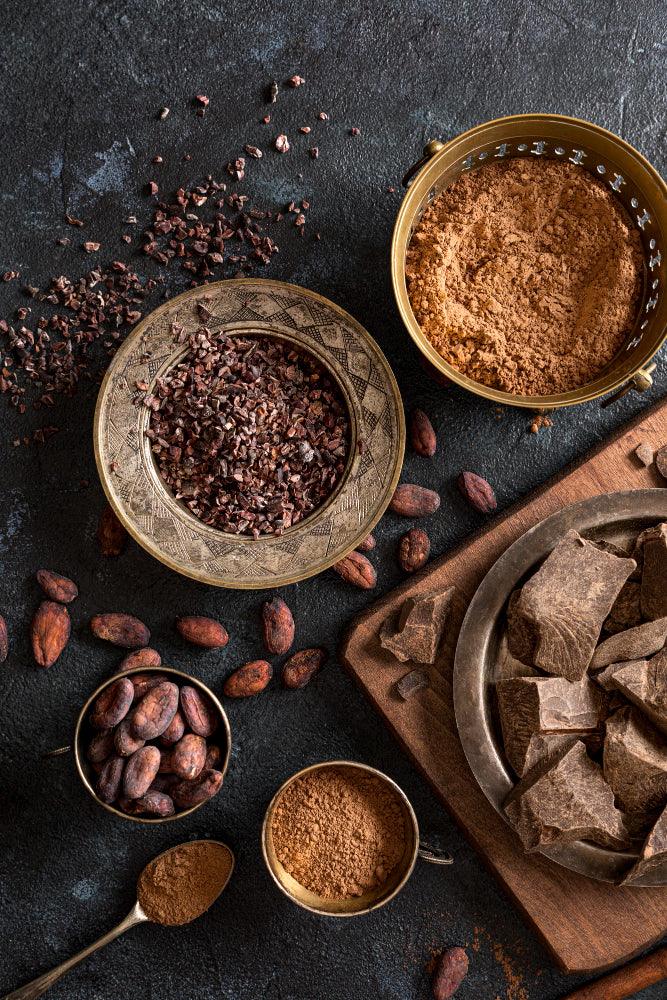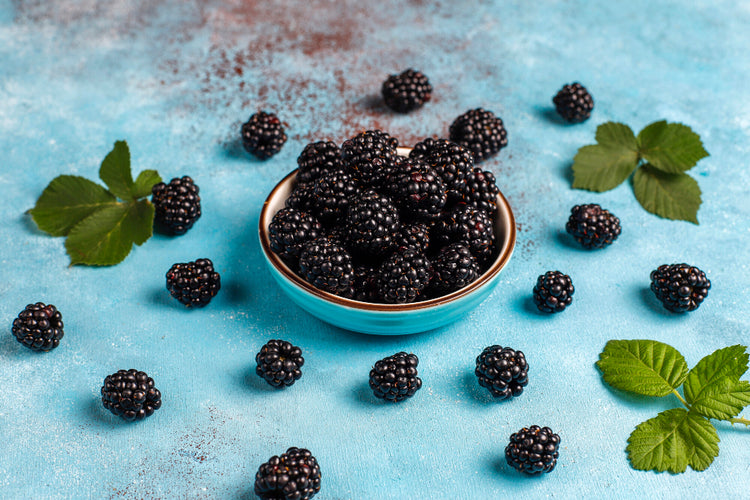Decadent Cacao Nib: Benefits, Risks and Uses


Related products
Cacao nibs, the less processed form of chocolate, are gaining popularity as a health food. These nibs are made by crushing cacao beans, which are the seeds of the Theobroma cacao tree, native to the Amazon Basin. Historically, cacao has been cultivated for over 3,000 years in Central and South America. In its raw form, it is considered a superfood due to its high content of nutrients and antioxidants. However, like all foods, cacao nibs also come with potential risks. This article explores the nutritional profile, health benefits, and potential risks associated with cacao nibs, alongside their diverse culinary applications.
The Nutritional Profile of Cacao Nibs
Cacao nibs are rich in various nutrients and bioactive compounds. Dr. Aaron Kesselheim, a nutrition expert, states, "Cacao nibs are an excellent source of minerals such as magnesium, iron, and zinc." Furthermore, they contain significant amounts of fibre and are a rich source of antioxidants, particularly flavonoids. When compared with other chocolate products, cacao nibs are less processed, contain no added sugars, and retain more of their natural nutrients. This distinction is critical as Dr. Laura Schmidt, a public health specialist, points out, "Most chocolate products lose their nutritional benefits due to the addition of sugar and fat during processing."
Health Benefits of Cacao Nibs
Antioxidant Properties
Cacao nibs are renowned for their high antioxidant content, particularly flavonoids. Antioxidants are vital in neutralising harmful free radicals in the body, thereby reducing cellular damage and inflammation. Dr. Sarah Brewer, a medical nutritionist, notes, "The antioxidants in cacao nibs can help in reducing oxidative stress, which is implicated in several chronic diseases." This effect is critical in maintaining cellular health and reducing the risk of conditions such as cancer and heart disease.
Heart Health
The benefits of cacao nibs extend significantly to heart health. The flavonoids in cacao can improve blood flow and reduce blood pressure. Dr. Simon Allen, a cardiologist, explains, "Flavonoids in cacao nibs can induce nitric oxide production, which relaxes blood vessels, improving circulation and lowering blood pressure." Furthermore, the consumption of cacao nibs has been linked to a reduction in “bad” LDL cholesterol and an increase in “good” HDL cholesterol, essential for heart health. Learn more about The Best Diet for a Healthy Heart
Mental Well-being
Cacao nibs can also positively impact mental well-being. They contain compounds that increase the levels of certain neurotransmitters in the brain, which can improve mood and combat depression. Dr. Jane Watkins, a neurologist, suggests, "Cacao nibs can stimulate brain function and enhance mood, thanks to their high content of serotonin and dopamine precursors." Moreover, the stress-reducing properties of cacao are attributed to its magnesium content, which is known to promote relaxation and alleviate stress.
Weight Management and Blood Sugar Control
Incorporating cacao nibs into a balanced diet can aid in weight management and blood sugar control. Despite their rich flavour, cacao nibs are low in sugar and high in fibre, which can help in controlling appetite and reducing cravings. Dr. Lucas Spencer, a dietician, states, "The fibre content in cacao nibs can help in regulating blood sugar levels, making it a beneficial food for people with diabetes." Additionally, the presence of healthy fats in cacao nibs can contribute to a feeling of fullness, aiding in weight management.
Potential Risks and Side Effects
Caffeine Content
Cacao nibs contain caffeine, which can cause side effects such as insomnia, nervousness, increased heart rate, and stomach upset in some individuals. Dr. Emily Stone, a general practitioner, advises, "Individuals sensitive to caffeine should limit their intake of cacao nibs, especially later in the day, to avoid sleep disturbances." For those sensitive to caffeine, it is recommended to monitor the amount consumed and possibly restrict intake to the morning hours.
Heavy Metals Contamination
A concern associated with cacao products, including cacao nibs, is the potential contamination with heavy metals, particularly lead and cadmium. Dr. Oliver Branch, an environmental health expert, explains, "Cacao plants can absorb heavy metals from the soil, which then make their way into cacao products." Consumers should look for products tested for heavy metals and follow guidelines for safe consumption, typically provided by health authorities or manufacturers.
Allergies and Intolerances
While uncommon, some individuals may experience allergic reactions to cacao nibs. Symptoms can include skin reactions, digestive discomfort, and respiratory problems. Dr. Susan Moore, an allergist, recommends, "Individuals who suspect an allergy to cacao should undergo testing and, if diagnosed, avoid cacao products entirely." It is also essential to read labels carefully for potential cross-contaminants if you have other food allergies.
Culinary Uses of Cacao Nibs
Breakfasts and Snacks
Cacao nibs add a rich flavour and crunch to breakfasts and snacks. They can be sprinkled over oatmeal, mixed into yogurt, or blended into smoothies to enhance nutritional content and taste. Homemade granola bars and energy bites incorporating cacao nibs provide a healthful, energising snack option.
Savory Dishes
Incorporating cacao nibs into savory dishes can introduce an unexpected twist and richness. They can be added to sauces, chili, and mole to deepen the flavour profile. Additionally, cacao nibs make an innovative salad topping, offering a satisfying crunch and nutrient boost.
Desserts and Baking
Cacao nibs can replace traditional chocolate chips in various recipes to reduce sugar intake and add a deep, chocolatey flavour. They are ideal for creating rich desserts and baked goods, from brownies to cookies, offering a less sweet, more intense chocolate taste.
Beverages
Cacao nibs can be blended into coffee, tea, and milkshakes for a subtle chocolate flavour and added nutrients. They are also used in crafting cacao-infused cocktails and mocktails, providing a unique taste and antioxidant boost.
Tips for Selecting and Storing Cacao Nibs
When selecting cacao nibs, look for high-quality, organic products to ensure minimal exposure to pesticides and contaminants. Dr. Lisa Hamilton, a nutritionist, advises, "Choose raw or minimally processed cacao nibs to maximise health benefits." Proper storage is crucial to preserve the freshness and flavour of cacao nibs. They should be stored in an airtight container in a cool, dark place, away from direct sunlight and moisture.
People Also Ask
Is cacao nibs good for you?
Yes, cacao nibs can be good for you when consumed in moderation as part of a balanced diet. They are rich in antioxidants, minerals such as magnesium, iron, and zinc, and contain fibre. These nutrients contribute to heart health, improve blood flow, support brain function, and may aid in weight management and blood sugar control. However, due to their caffeine content and potential for heavy metals contamination, they should be consumed wisely, particularly by those with specific sensitivities or health conditions.
Can you just eat cacao nibs?
Yes, you can eat cacao nibs as they are. They can be consumed raw or added to various dishes for added texture and flavour. Cacao nibs have a crunchy texture and a rich, chocolatey taste, although they are less sweet than processed chocolate. They are a versatile ingredient that can be incorporated into breakfasts, snacks, savory dishes, desserts, and beverages.
Are cacao nibs the same as dark chocolate?
No, cacao nibs are not the same as dark chocolate. Cacao nibs are less processed; they are simply crushed cacao beans without any added sugar or fat. In contrast, dark chocolate is made from cacao beans that have been processed and mixed with sugar and cocoa butter. Although both contain antioxidants and beneficial compounds, dark chocolate typically contains less of these than cacao nibs and more sugar and calories.
What do cacao nibs taste like?
Cacao nibs have a bitter, earthy flavour akin to unsweetened dark chocolate but with a crunchier texture. They are not naturally sweet but have a rich, intense chocolate taste. Some people may detect nutty or fruity undertones. The flavour can vary depending on the origin and treatment of the cacao beans from which they are made.
Conclusion
Cacao nibs offer numerous health benefits, from improving heart health to aiding in weight management. However, they also come with potential risks and side effects that consumers should be aware of. By understanding these aspects and incorporating cacao nibs into the diet judiciously, individuals can enjoy the flavour and health benefits of this versatile superfood. Whether used in breakfasts, savory dishes, desserts, or beverages, cacao nibs can enhance the nutritional profile and taste of various dishes. When selecting and storing cacao nibs, opting for high-quality products and following proper storage guidelines are essential to maximise their health benefits.









 Rated Excellent by 26,523+ Reviews
Rated Excellent by 26,523+ Reviews